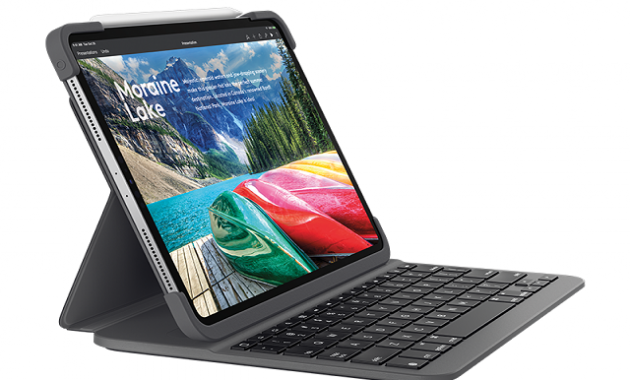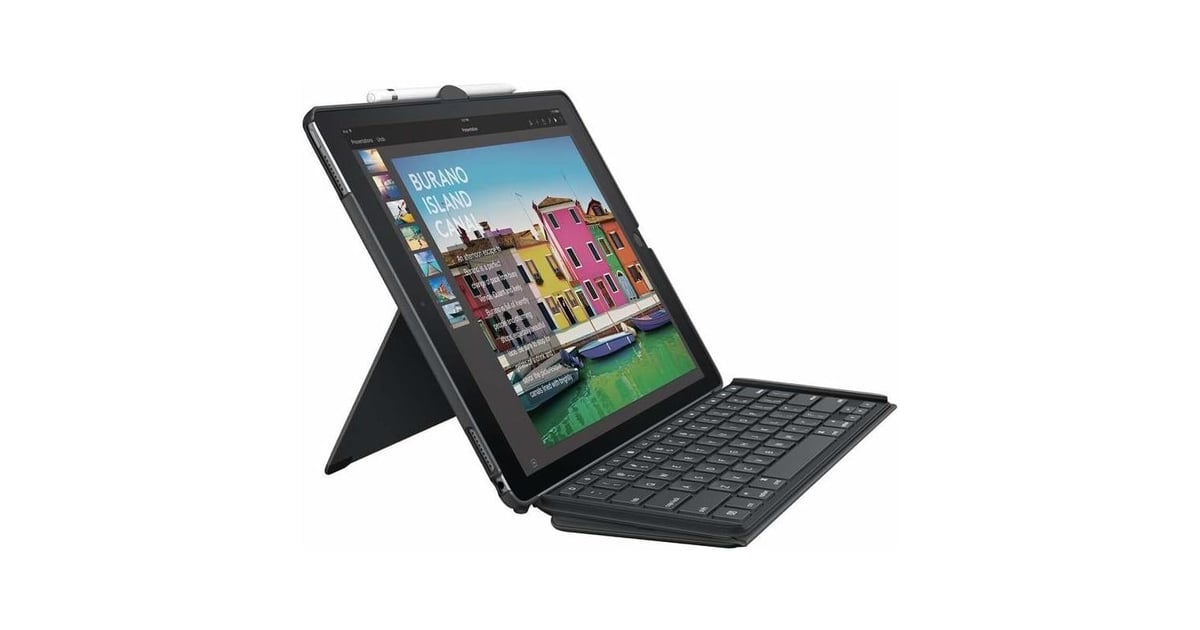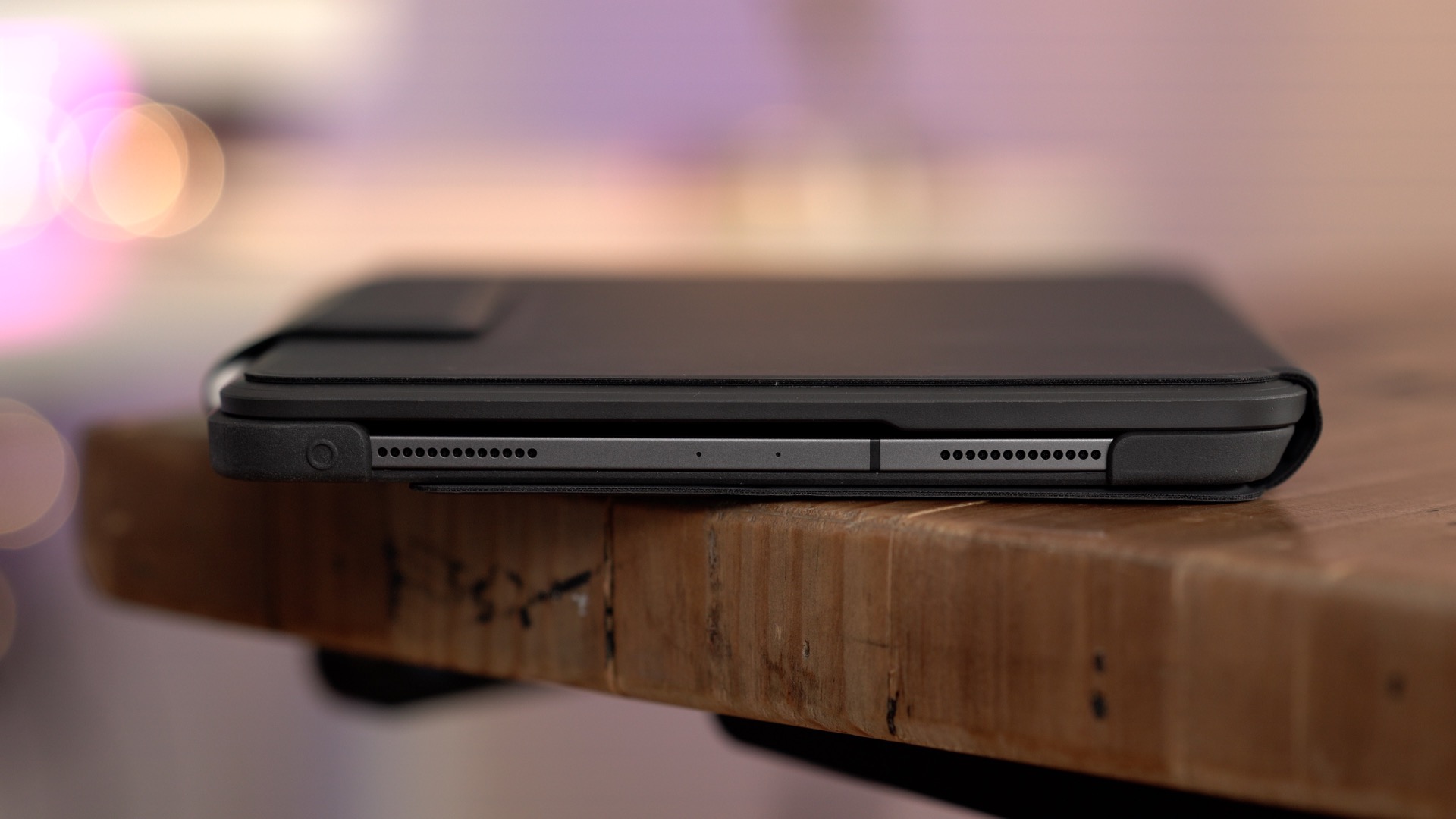

I found that when I was typing with the Slim Folio Pro in my lap, the iPad had a tendency to rock back and forth as that flap of material slid back and forth. Second, at the very back of the horizontal keyboard plane where the case wraps around and provides support to keep the iPad upright, there’s half an inch of flexible material that serves as the spine of the case when it’s closed. If you don’t like the particular angle of the iPad Pro in this case, there’s nothing you can do to change it. Unfortunately, this design has a few side effects.

The edge of the iPad lands right behind the function row, about one-third of the way down the plane on which the keyboard sits. This means it’s a different feel than you’d get on a MacBook, where the keyboard is pushed further back to leave room for a trackpad just below the keyboard. Like Apple’s Smart Keyboard Folio, the Slim Folio Pro (and unlike Brydge’s keyboard) places the keyboard at the very front of the keyboard surface.
#SLIM FOLIO PRO LOGITECH 12.9 BLUETOOTH#
While the Slim Folio Pro connects to the iPad via Bluetooth rather than Smart Connector (and charges via a USB-C port), it’s got a clever way of saving power: it only activates when you set the iPad in a magnetic slot on the front of the case.

The arrow keys are in the familiar inverted-T configuration that Apple has unfortunately moved away from in its own laptops.
#SLIM FOLIO PRO LOGITECH 12.9 FULL#
(That’s a good thing.) There’s a full function row, giving you control over keyboard backlighting, screen brightness, media playback, volume, and other shortcuts that users of Apple’s own Smart Keyboard Folio don’t have access to. The keycaps have a smooth texture and typing feel that remind me of classic Apple laptop keys. The keyboard itself is good, though the entire keyboard surface is made of gray plastic that feels a little cheap when compared to the aluminum-framed keyboards you’ll find in Apple’s laptops (or Brydge’s iPad Pro keyboard). If you want to close the case, though, you won’t be able to charge the pencil-but Logitech does provide a loop on a magnetic flap that’s used to keep the case securely closed, making it less likely that you’ll misplace the Pencil when it’s not attached. When I write about iPad keyboards, the question I get most often is, “Why turn your iPad into a laptop instead of getting a laptop?” If you want my answer, check out the “Why not get a laptop?” section in my December 2018 story about the Brydge Pro keyboard.Īs you might expect, the two corner pieces on this case are shaped the way they are so that they don’t cover up the magnetic charging area for the Apple Pencil.

(The Slim Folio Pro weighs 704 grams, almost identical to the Brydge Pro-but the Brydge is denser and slimmer. If you’re someone who prefers to leave the iPad in the case most of the time, this is fine, but the Slim Folio Pro is a thick, bulky case, and I have a hard time believing that anyone would want to keep it on their iPad when they weren’t actively using the keyboard. The result is a case that feels sturdy and protective, but it also means that every time you want to extract the iPad from the case, you’ve got to push those corner pieces off. In the case of the Slim Folio Pro, you tuck the non-Apple Pencil side of the iPad into a large rubberized bumper, and then push two small rubberized bumpers over the other corners. Unlike the approach of a company like Brydge, which builds aluminum keyboards into which you clip the iPad by its corners, Logitech’s cases generally cover all four corners of the device. Logitech’s iPad cases have always wrapped the device in protection. With the $130 Slim Folio Pro for the 2018 12.9-inch iPad Pro (the 11.5-inch model is $120), Logitech continues its commitment to making very good iPad keyboard cases-that just don’t seem to fit with the way I prefer to use my iPad Pro. Its case for the original 9.7-inch iPad Pro was close to perfect. Logitech has been making keyboard cases for the iPad Pro since the very beginning. Note: This story has not been updated for several years.


 0 kommentar(er)
0 kommentar(er)
